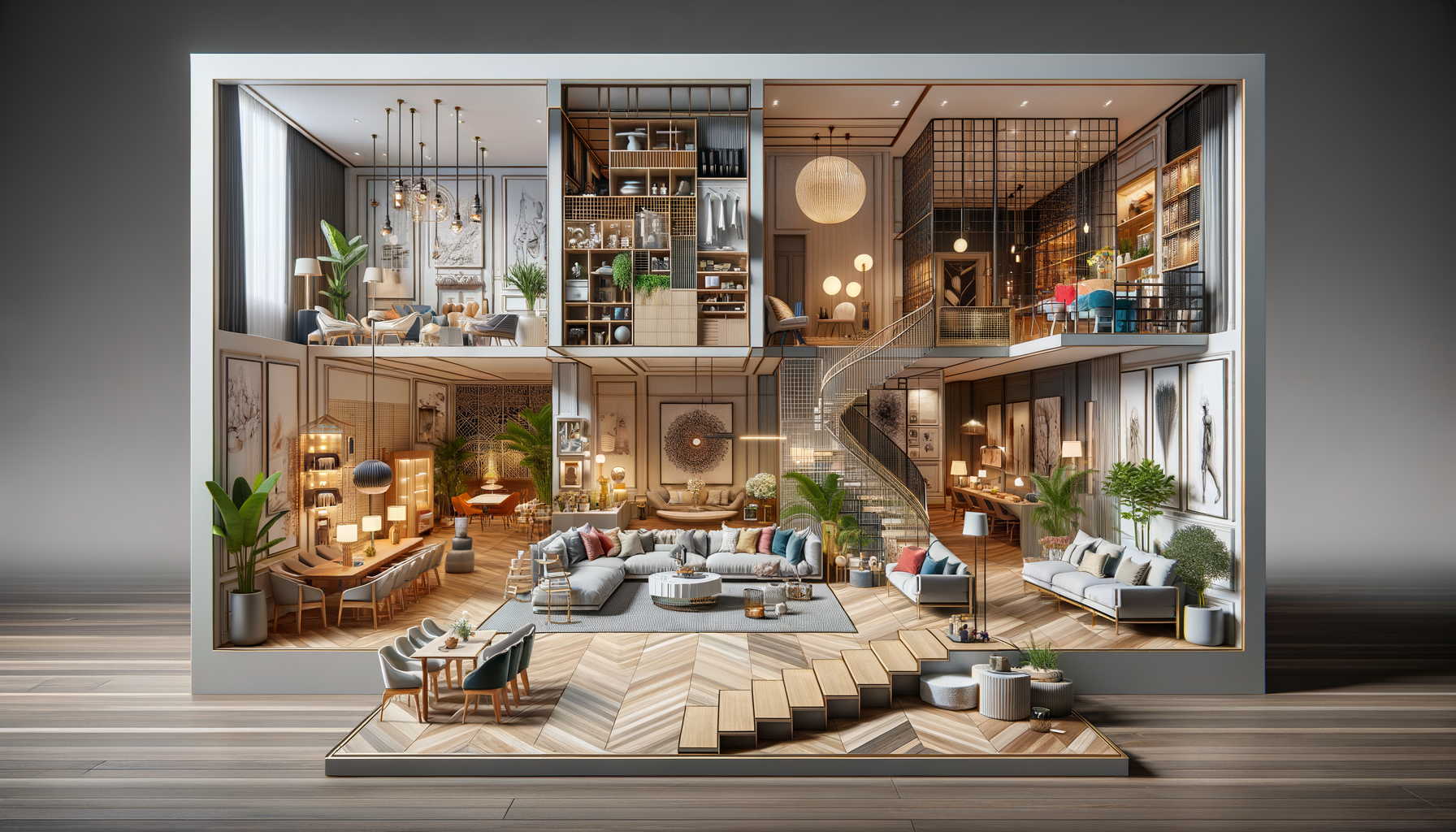
An In-Depth Look into Interior Design
The Evolution of Interior Design
Interior design has a rich history that dates back to ancient civilizations. Over the centuries, it has evolved from simple spatial arrangements to a sophisticated discipline that blends aesthetics with functionality. In ancient Egypt, interior design was primarily about creating spaces that reflected religious beliefs, with an emphasis on symmetry and order. Fast forward to the Renaissance period, and we see a shift towards opulence and grandeur, with intricate details and luxurious materials becoming the norm.
In the 20th century, interior design underwent significant transformations, influenced by technological advancements and changing societal norms. The Bauhaus movement, for instance, introduced the idea of functional design, where form follows function. This era also saw the rise of modernism, characterized by minimalism and the use of new materials such as glass and steel. Today, interior design is a dynamic field that continues to evolve, embracing sustainability and technology to create spaces that are not only beautiful but also environmentally friendly.
The Principles of Interior Design
At the core of interior design are several principles that guide designers in creating harmonious and balanced spaces. These principles include balance, contrast, rhythm, scale, and proportion. Balance refers to the distribution of visual weight within a space, which can be achieved through symmetrical, asymmetrical, or radial arrangements. Contrast, on the other hand, is about creating visual interest by juxtaposing different elements, such as colors, textures, and shapes.
Rhythm in interior design is the repetition of elements to create a sense of movement within a space. This can be accomplished through patterns, color schemes, or the arrangement of furniture. Scale and proportion are crucial in ensuring that the elements within a room relate well to each other and to the space as a whole. A well-designed room will have a sense of unity, where all elements work together to create a cohesive look.
- Balance: Symmetrical, asymmetrical, radial
- Contrast: Colors, textures, shapes
- Rhythm: Patterns, color schemes, furniture arrangement
- Scale and Proportion: Relating elements to each other and the space
The Role of Color in Interior Design
Color is one of the most powerful tools in interior design, capable of transforming a space and influencing the mood and perception of its occupants. Different colors evoke different emotions and can significantly impact the atmosphere of a room. For instance, warm colors like red, orange, and yellow are known to create a sense of warmth and coziness, making them ideal for social spaces like living rooms and kitchens.
Conversely, cool colors such as blue, green, and purple are often associated with calmness and relaxation, making them suitable for bedrooms and bathrooms. Neutral colors like white, gray, and beige serve as a versatile backdrop that can complement any design style. When selecting colors for a space, it is essential to consider the room’s purpose, the amount of natural light it receives, and the desired mood. A well-thought-out color scheme can enhance the overall design and create a harmonious environment.
Furniture and Its Impact on Interior Design
Furniture plays a crucial role in interior design, serving both functional and aesthetic purposes. The choice of furniture can define the style of a room, influence its layout, and affect how the space is used. In modern interior design, furniture is often selected for its ability to serve multiple functions, such as a sofa bed or a coffee table with storage capabilities.
When choosing furniture, it is important to consider factors such as size, material, and style. The size of the furniture should be proportionate to the room and should allow for comfortable movement within the space. The material of the furniture can add texture and interest, with options ranging from wood and metal to glass and fabric. The style of the furniture should complement the overall design theme, whether it be contemporary, traditional, or eclectic. Ultimately, furniture should enhance the functionality of a space while contributing to its aesthetic appeal.
- Functional and aesthetic purposes
- Multi-functional furniture: Sofa beds, storage tables
- Considerations: Size, material, style
Embracing Sustainability in Interior Design
As awareness of environmental issues grows, sustainability has become a significant consideration in interior design. Designers are increasingly seeking ways to create eco-friendly spaces that minimize environmental impact while maintaining aesthetic appeal. This involves using sustainable materials, such as reclaimed wood, bamboo, and recycled metal, which are not only environmentally friendly but also add unique character to a space.
Energy efficiency is another crucial aspect of sustainable interior design. This can be achieved through the use of energy-efficient lighting, appliances, and heating systems. Additionally, incorporating natural elements, such as indoor plants, can improve air quality and create a connection with nature. By embracing sustainability, interior designers are not only contributing to the well-being of the planet but also creating healthier and more enjoyable living environments for their clients.
- Sustainable materials: Reclaimed wood, bamboo, recycled metal
- Energy efficiency: Lighting, appliances, heating systems
- Natural elements: Indoor plants, air quality, connection with nature

